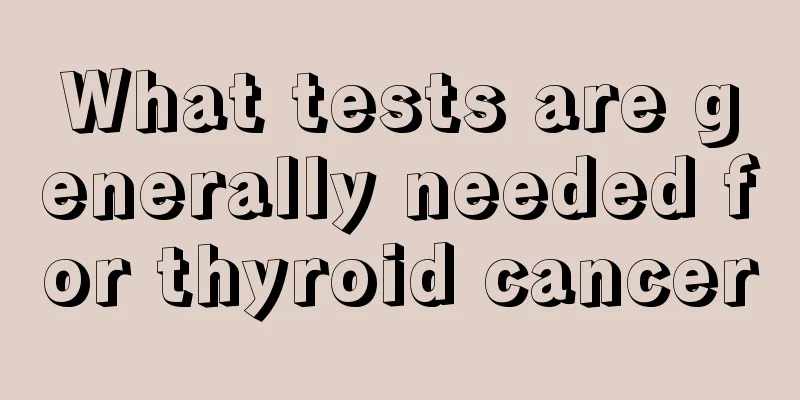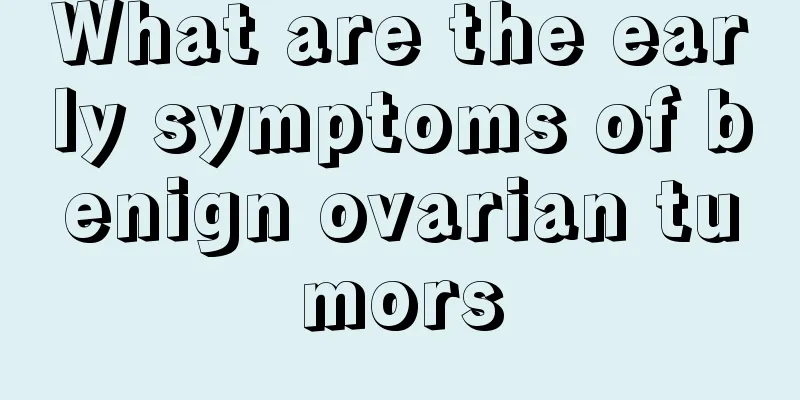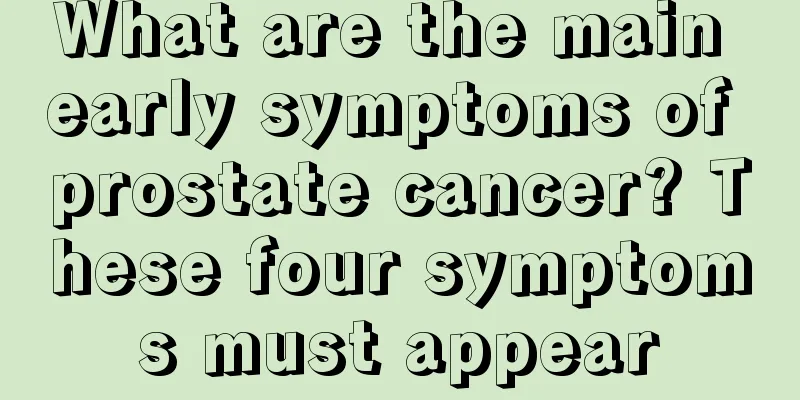What tests are generally needed for thyroid cancer

|
What kind of examinations are generally needed for thyroid cancer? Regardless of the treatment of any disease, an examination is required first to help understand the development of the disease and to confirm the type of disease. Thyroid cancer is a malignant tumor disease. Because the surface symptoms are not obvious, examination is the only basis for diagnosis. So what kind of examinations are generally needed for thyroid cancer? 1. Clinical examination Attention should be paid to the location, shape, size, single or multiple thyroid tumors, texture, degree of activity, whether the surface is smooth, tenderness, and whether it can move up and down with swallowing. In addition, attention should also be paid to whether the cervical lymph nodes are enlarged, hoarseness, and vocal cord activity. Thyroid cancer should be considered if the following symptoms are present: (1) The tumor is firm and has a rough surface. (2) Male and child patients are more likely to have cancer. (3) Producing symptoms of compression, such as hoarseness or difficulty breathing. (4) The tumor is limited in activity or fixed and does not move up and down with swallowing. (5) In some cases of cervical lymph node enlargement, lymph node puncture can extract straw-yellow fluid. (6) Sudden enlargement in a short period of time. However, it should be noted that thyroid cystadenoma may be accompanied by intracystic bleeding. 2. Cytological examination Fine needle aspiration biopsy of the primary lesion or cervical lymph nodes can often confirm the diagnosis. Since FNAB only makes a diagnosis from a cytological perspective, it is difficult to classify the tumor tissue. In cases of cervical lymph node enlargement, cervical lymph node biopsy or frozen section examination can also be performed. 3. X-ray examination X-ray examination of the lateral and anteroposterior neck can show the calcification (sammoth body) foci in the thyroid tumor, tracheal compression and displacement. Barium swallow examination can help to understand whether the esophagus is involved. Chest X-ray examination can find metastasis to the upper mediastinum and lungs. 4. B-mode ultrasound examination Images of early thyroid cancer and solid and cystic tumors can be obtained. 5. CT and MRI scans CT has certain clinical significance in judging the benign and malignant nature of thyroid tumors and distinguishing between solid and cystic tumors. 6. Thyroglobulin determination It is helpful for the differential diagnosis of thyroid cancer. If you have these symptoms of thyroid cancer, please go to a regular oncology hospital for a thyroid cancer examination as soon as possible to confirm whether you have thyroid cancer. |
<<: What is the pathological diagnosis of thyroid cancer
>>: What is the best treatment for bile duct cancer
Recommend
What are some tips for cleaning kitchen grease stains?
Kitchen hygiene is a very important matter, and i...
How to deal with static electricity on clothes sticking to your body
Whenever autumn and winter come, you will find th...
What is the cause of lumps on the temples?
The growth of pimples on the temples may be cause...
What are the causes of rectal cancer
Rectal cancer is a common disease in our lives. A...
What should I do if there is fluid accumulation in the knee joint?
Generally speaking, even normal human joints will...
Introduction to the use of ventilator
The ventilator is a tool to assist sleep. It can ...
Clinical manifestations of rectal cancer
As part of the large intestine, the rectum shares...
Will I have a fever in the later stages of brain cancer?
Advanced brain tumors may be part of the fever ph...
Why does my chest hurt? It may be these reasons
Chest pain is a common clinical symptom. Many peo...
What to eat to gain weight?
Losing weight is a distressing thing, but gaining...
What is the reason for tumors on the body_Why is the body prone to tumors
There are many reasons why tumors grow on people&...
Can't forget my ex
In a romantic relationship, the relationship betw...
What should I do if the handle is stuck with 502 glue?
We will encounter many problems in life, but some...
Will bladder cancer cause back pain? Here are 3 unique symptoms of bladder cancer for you
Bladder cancer can occur in any population, of co...
Be aware of preventing colon cancer in daily life
The incidence of colon cancer is very high and th...









